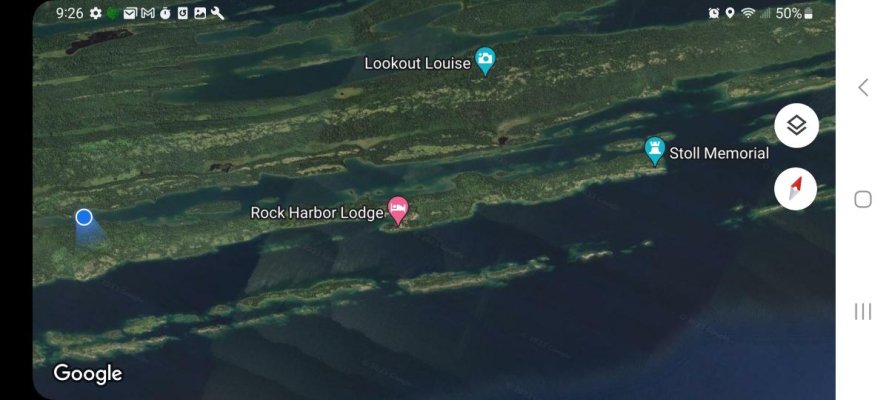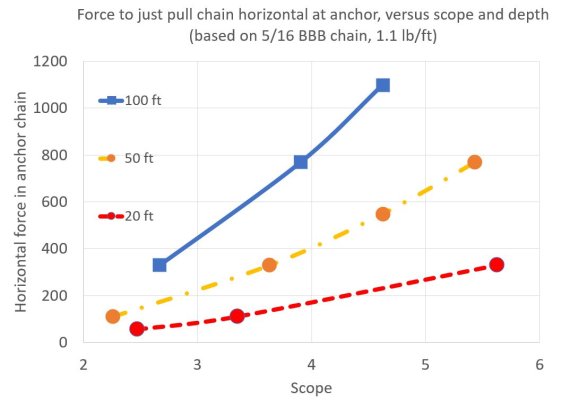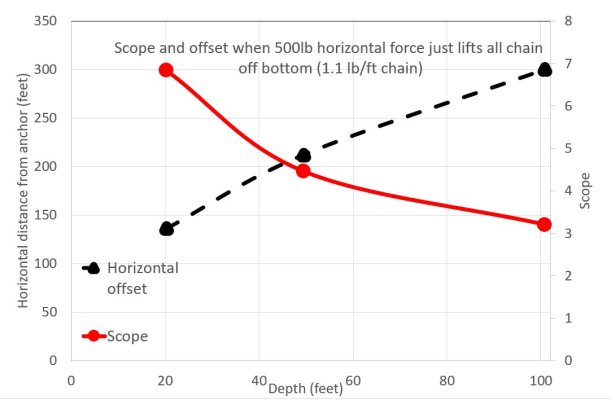Jeff F
Guru
- Joined
- Nov 5, 2015
- Messages
- 2,437
- Location
- Canada
- Vessel Name
- Escapade
- Vessel Make
- 50` US Navy Utility trawler conversion
But in sustained heavy winds think the chain is always tensioned enough it’s tight enough to walk on. Think only the snubbers are mitigating shock loads to any appreciable degree.
Appreciate comments, and WRT waves, to my mind that's the biggest challenge. Shock loads can be enormous. My goals are generally to avoid heavy seas underway or at anchor. Without waves it's easy to deal with wind, in my experience.
So I'll happily give up room to swing on a long rode if I can get into shelter from waves on a shorter rode. That's my personal preference, and my practices match that.
I'm still not convinced that adding scope in the absence of waves buys you a lot. The math is available... What's the force required to raise the angle of pull at the anchor to above horizontal at various scope ratios?



